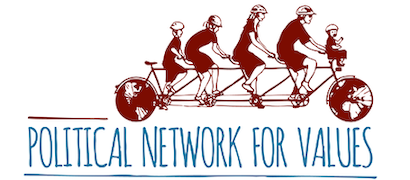Analysis • By Carlos Polo | On Sunday, April 11, presidential elections were held in Peru. The great majority of Peruvians were (unhappily) surprised to see a communist candidate and admirer of Chavism, Pedro Castillo, come in first with 19% of all valid votes. Only two weeks before, neither of the pollsters had prognosticated him any close to the place he finally obtained.
And as one can be president with more than 50% of the votes, a run-off will be held with the two candidates who, in this first round, received the most votes. This second round election will be held on June 6 with Keiko Fujimori, who came in second with 13.36% of the votes, narrowly beating Rafael Lopez Aliaga (11.73%), a candidate openly opposed to the globalist agenda and a faithful Catholic. Both Fujimori and López Aliaga lead parties with a clear pro-life and pro-family attitude.
Another happy aspect of the surprise of these elections is that candidates with pro-LGTBI, pro-gender ideology and pro-abortion views finished in the last places. Even Pedro Castillo himself declared to be against abortion, euthanasia, gender-ideology and same-sex marriage, however, these statements do not generate much confidence in him: his government plan says the opposite and so does the ideological sector he represents both locally and internationally.
Peru has suffered from great political instability in the recent years. In March 2018, Pedro Pablo Kuczynski resigned when his impeachment for moral incapacity (due to acts of corruption) was about to be voted in Congress. He was replaced by Martín Vizcarra, his vice president, who in September 2019 dissolved the Congress and called for new elections. This newly elected Congress in January 2020 dismissed Vizcarra for the same reasons as it did Kuczynski in November 2020.
According to the Constitution, the President of the Congress Manuel Merino assumed the position, but due to a severe political pressure he had to resign. Francisco Sagasti was elected the new President of the Congress and automatically assumed the functions of President of the country until July 2021. In other words, in November 2020 Peru had three presidents in a single week.
Peru is experiencing a lethal combination of a sanitary, economic and political crisis. In relation to the pandemic, the country holds the world record for the most deaths per million inhabitants. With a disastrous management mainly limited to very strict lockdowns. The Sinopharm vaccines that were suspiciously imposed over other options and were purchased late are now embroiled in a political corruption scandal that took away the little credit that the Sagasti transition government had left.
All this has created a huge recession and the loss of millions of jobs. Thousands of Peruvians are dying from the disease, yet the government has not provided enough vaccines, has not even installed oxygen plants or increased ICU beds, and the medical personnel have more fatal casualties every day and less strength to contain the second wave of COVID-19. And meanwhile, the Purple Party to which Sagasti belongs, prioritizes the debate about laws on “gender identity”, abortion and euthanasia in the Congress.
To sum up, ineptitude, corruption and globalist agenda have been the characteristics of the Vizcarra and Sagasti governments.
Many analysts agree that the vote has reflected a rejection of the traditional political class and above all the traditional socialist left. Some went to the communist and terrorist extremists, since Pedro Castillo has clear links with Sendero Luminoso and his vote has been massive in the provinces most identified with that ideology and prey to a great resentment with a State that does not even attend to them in their basic services. As well as others have rejected with their vote for the traditional globalist left. The candidate of Sagasti’s Purple Party did not come out of the “others” category.
In the same electoral process, the 130 parliamentarians of the only congressional chamber in Peru were also elected for the next 5 years, coinciding with the presidential term (if similar events do not occur at the recent crises).
The results give parliamentarians up to 10 political parties, configuring a fragmented congress where it will be difficult to make alliances. The Popular Renewal party made its electoral debut and did not do badly at all. Their candidate came third among suspicions of fraud against them, but they managed to get a very decent representation of 15 congressmen and almost all of them being avowed with their pro-life perspectives.
They will be an important parliamentary contingent together with Popular Force whose leader Keiko Fujimori made a viral video committing herself to respect the life of the conceived and the right of parents to educate their children, the promotion of the family and against the manipulation of those who confuse the population with the term gender.
All pro-LGBT and pro-abortion parties’ agenda have lost or have less representation. The Purple Party, which was the main support of Vizcarra and to which Sagasti belongs, got only three seats.
The date of the second round of elections to elect the new president in Peru is very close. The polls currently have no credibility due to the gross margin of error and suspicions of manipulation of results. There is a little more than a month left.
Some press agencies are just now reporting on Pedro Castillo’s links with the terrorist group Sendero Luminoso and his plan with communist Chavista coordinates. He is facing precisely the daughter of former president Alberto Fujimori, the same one who defeated the Shining Path by imprisoning its leaders in the 90s.
Unfortunately, this is the image of a fractured and polarized country. For better or worse, the candidate who transmits unity and national reconciliation to the greatest number of Peruvians will win.
•
Carlos Polo is a political analyst and consultant, director of the Latin America office of the Population Research Institute, and a member of the Expert Committee of the Political Network for Values.



